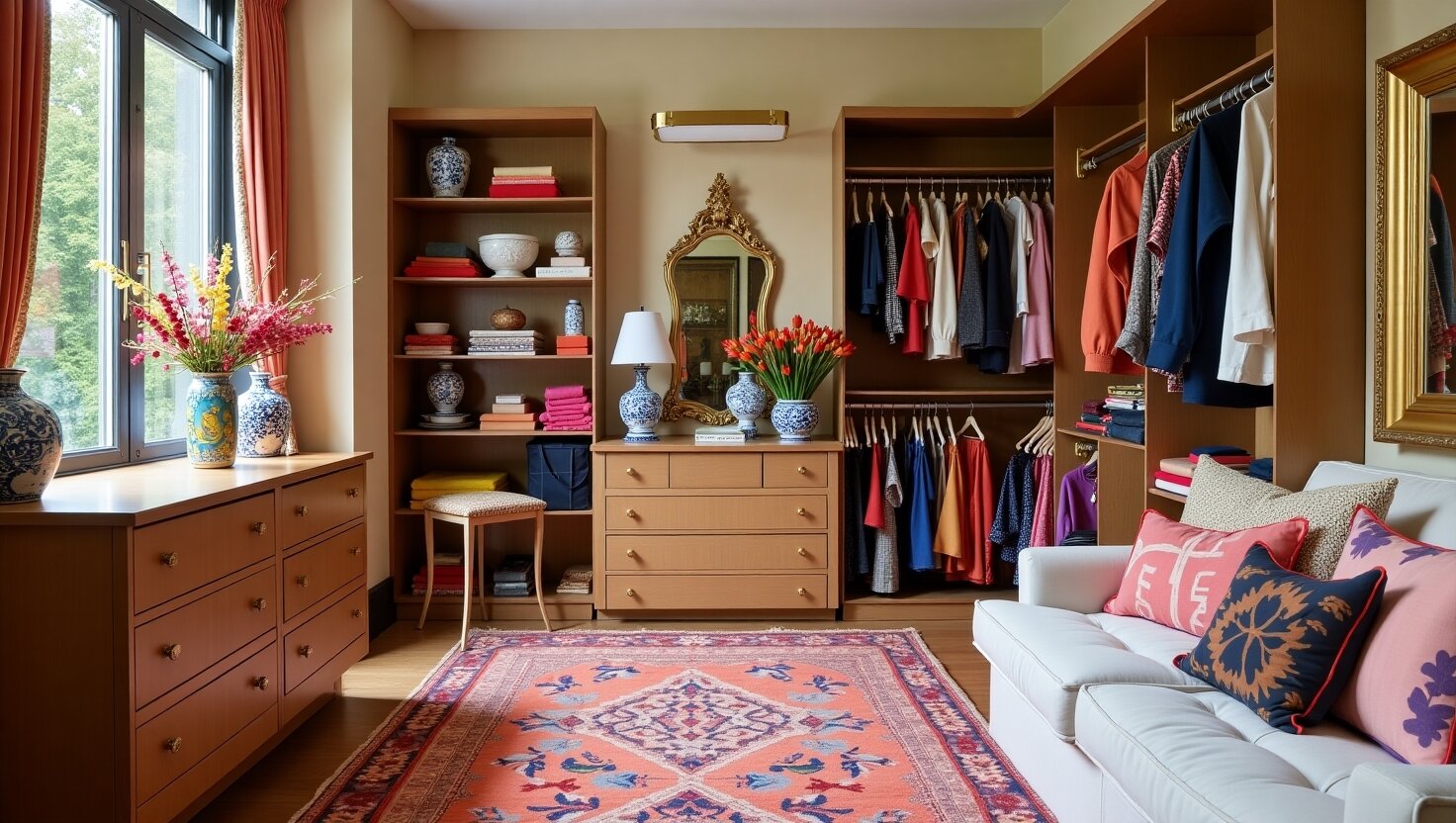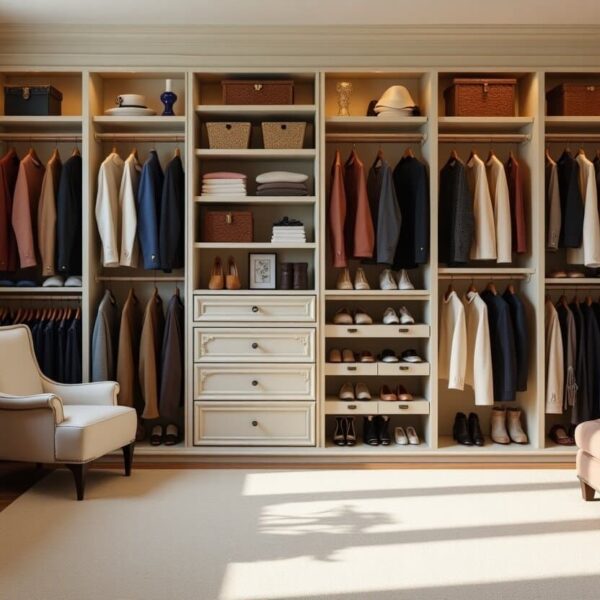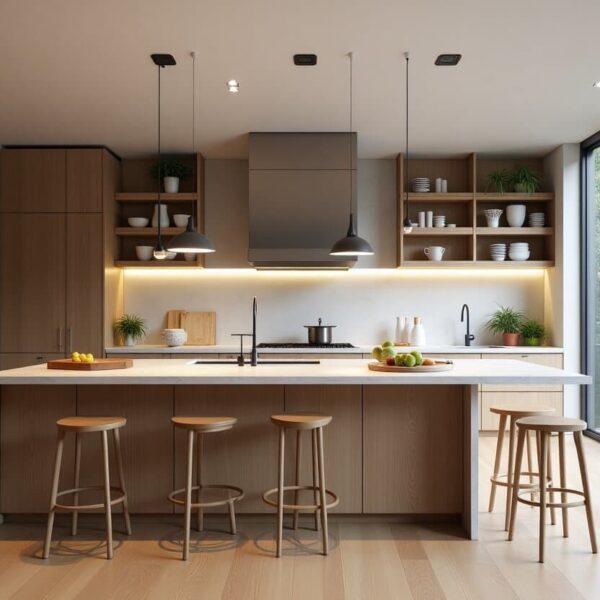Have you ever found yourself stretching on tiptoes for a shirt on the top shelf, bending awkwardly to retrieve socks from the back of a deep drawer, or seeing your long dresses dragging on the floor? If so, your closet simply wasn’t designed for your height. Most standard wardrobes are built to average dimensions, completely overlooking the crucial ergonomic nuances of individual needs. This leads to wasted space that’s out of reach and items getting buried. And if you’re sharing a closet with a partner or children, these inconveniences are only amplified by the differences in height.
Why Height Matters in Wardrobe Design
Your reach zone (what you can access easily) and comfort zone (what you can access comfortably) are entirely determined by your height.
A 180 cm adult, a 150 cm petite woman, a 120 cm child, and a wheelchair user all interact with storage space very differently. Ignoring this leads to daily frustrations, awkward postures, and even potential safety hazards.

Measure Your Body & Space
Before designing a custom closet, accurately measuring your key dimensions is crucial to ensure it truly fits your needs. Start by measuring your standing height, which provides a benchmark for overall proportions. Next, determine your shoulder height; this is vital for placing hanging rods at an ideal level, ensuring clothes don’t drag on the floor or hang too high to reach comfortably. You can do this by standing against a wall, placing a book or clip on top of your shoulder, and then measuring from the floor to the bottom of that marker.
Equally important is understanding your arm’s reach, specifically your comfortable overhead reach and maximum overhead reach. Your comfortable overhead reach is how high you can easily reach without straining or standing on tiptoes. Your maximum overhead reach, on the other hand, is the height you can touch by fully extending or tiptoeing — this zone is typically reserved for items you don’t access often. Knowing both heights helps you strategically plan upper and lower storage, boosting efficiency.
Furthermore, measuring the lowest point you can comfortably bend to reach is essential. This prevents unnecessary strain when using drawers or low shelves. Utilize a tape measure, a book, or a clip to mark these key heights. For enhanced precision, consider using a laser level. To define your “no-bend” zone, stand straight and measure the distance from your fingertips to the floor, then add approximately 20 centimeters; this represents the lowest point you can access without needing to squat.
If you’re sharing a closet with someone, like a partner, it’s highly recommended to account for each person’s height differences and their frequently used items. Even within a single closet, creating distinct, personalized zones ensures that every user can easily access their belongings.

Height-Optimized Wardrobe Solutions
Once you’ve figured out your space, you can finally start putting together a closet that actually suits your needs.
A good place to begin is with hanging space. For long items like coats and dresses, you’ll need the rod high enough so nothing drags—somewhere around 65 to 70 inches (165–178 cm) off the floor usually works well.
If you’re trying to make the most of your vertical space, especially in a smaller room, consider using two rods instead of one. It’s a simple way to double your storage for shirts, folded trousers, and short jackets. The upper rod can go around 80–84 inches (203–213 cm), with the lower one roughly at 40–42 inches (102–107 cm).
For things that are in between—like skirts or longer jackets—you can place a rod around 45–50 inches (114–127 cm). Of course, these numbers aren’t set in stone. Some people like to work off their own height to customize things. For example, if you’re 158 cm tall, a rod around 78 cm might feel just right for your daily shirts. For dresses, a little higher. For outerwear, higher still.
Have a project in mind? Send a message.
Get the catalog for free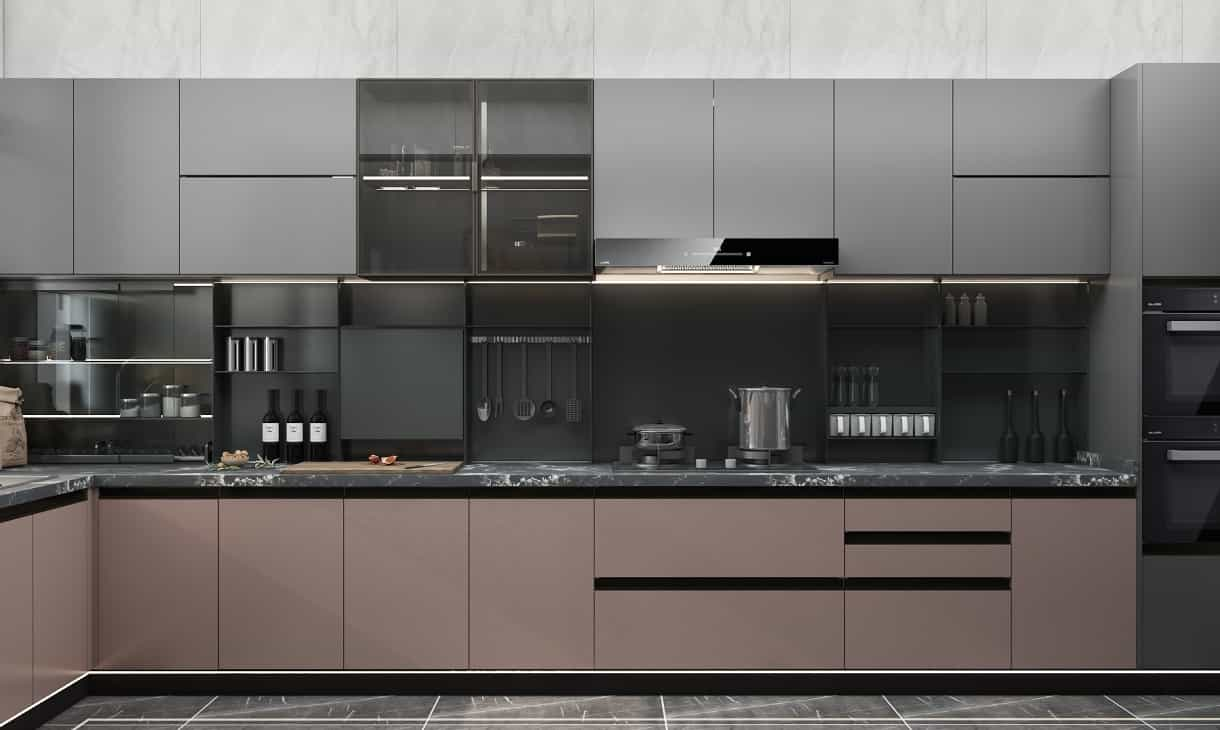
Next up: shelves. Adjustable ones are ideal because your storage needs tend to change over time. One month you’ve got stacks of jeans, the next it’s bulky knits. Keep the shelves you use often around chest or eye level—easy to reach without much effort. The ones up high or low? Perfect for bins or off-season stuff. Just watch the depth. Too shallow and you’re cramming; too deep and things get lost.
Drawers are all about easy access. Heavy things or less-used items can go in the bottom drawers—somewhere around 48 cm from the floor is usually okay. The middle zone, from your waist to chest, is your go-to for everyday clothes like underwear, socks, and tees. Top drawers? Great for small items or anything you want to keep out of sight. If you’re not very tall, keep drawer depth around 40 cm or less so it’s easier to reach the back.
A few extras can really change how your closet works. Pull-down rods make high sections usable, especially if you’re shorter or want to avoid stepping stools. Lighting is a small thing that makes a big difference. It helps you see clearly in corners and on high shelves, so you’re not fumbling around every morning.
Shoes? A stepped rack—lower in the front, higher at the back—keeps everything in view. And accessories like belts, jewelry, or ties? Try using wall space. Slim pull-out racks or rotating organizers keep them from turning into a tangled mess.

Tailored Designs for Every User Your Custom Wardrobe
The beauty of a custom wardrobe lies in its adaptability, shining through when designed for different users. If you’re a taller individual, you might often find clothes dragging or awkward folding due to insufficient height in standard wardrobes. Solutions for you include maximizing high-level hanging and shelving, opting for fewer double-hang sections in favor of more generous long/medium hang areas, and utilizing deep upper shelves for bulky items like luggage or seasonal bedding. Conversely, for the shorter individual, you’ll benefit most from prioritizing pull-down rods and easily accessible mid-level shelving. You’ll likely find more double-hang sections helpful to fit more items within your comfortable reach, and bottom drawers and shelves will be your go-to for daily essentials. If space allows, consider a sturdy, built-in step stool or a discreet ladder for those infrequent high reaches. For wheelchair users, hanging rod heights can be significantly lowered, by about 20% compared to standard recommendations, for full independence.
When it comes to shared custom wardrobes, the golden rule is dedicated zones! Clearly assign “his” and “hers” sections or sides. Place shared items like linens or rarely used special occasion wear at a middle, accessible height for both users. Adjustable components are key here, as shelves and rods can be repositioned to accommodate varying heights. Smart organizations, such as color-coded hangers or storage bins, can prevent mix-ups. You might consider classic layouts like an “Equal Split” for symmetrical spaces, “Exclusive Customization” for differentiated designs (think men’s pant drawers versus women’s accessory compartments), or a “Shared Central Hub” for communal items like shoes and bags.
Finally, specific body types and needs also warrant tailored solutions in your custom wardrobe. For those with broad shoulders (>45cm), add an extra 8cm to hanging depth to prevent clothes from being squeezed. If you have abnormal arm length, adjust hanging height by ±5cm based on your arm span-to-height ratio. For pregnant women (mid-to-late term), lower commonly accessed points by about 12cm to account for a shifted center of gravity and reduced overhead reach. And for seniors, design to minimize bending and high reaching; focus on easily accessible mid-to-lower sections, and incorporate features like soft-close drawers to prevent pinching and ensure ease of use.
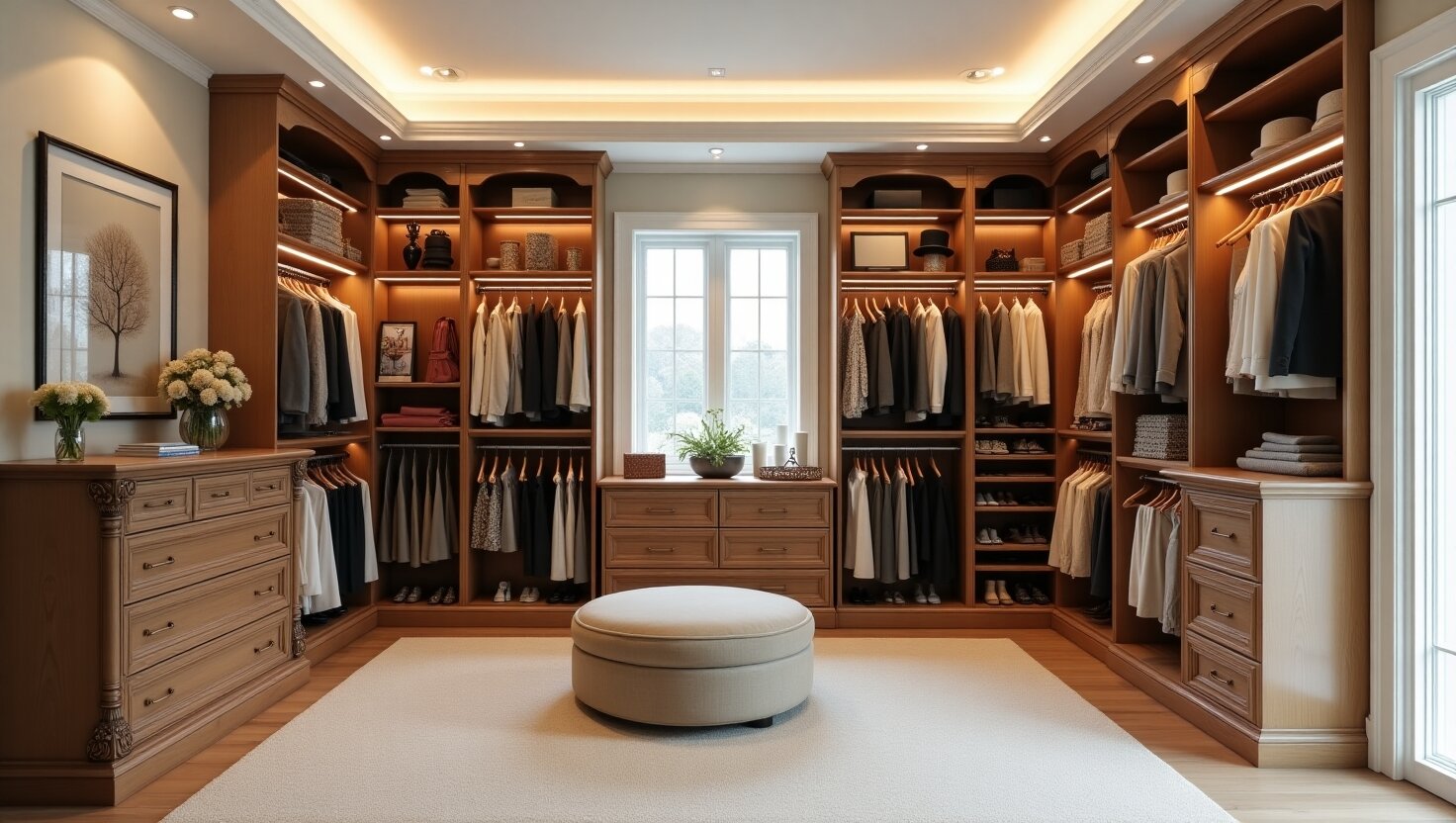
NextHome Furnishing Your Partner in Custom Closet Perfection
Designing a closet that truly fits your height isn’t just about storage; it’s about transforming your daily routine into one of comfort and efficiency. Your closet shouldn’t make you compromise; it should seamlessly integrate into your life’s rhythm. Professional help is invaluable here – they can accurately measure, maximize space, and apply ergonomic expertise to your specific needs.
At Nexthome Furnishing, we understand the nuances of truly custom cabinetry. As a specialized Chinese custom wardrobe manufacturer and Chinese custom wardrobe supplier focusing on the export market, we bring over 10 years of experience in the high-end custom furniture sector. We’re dedicated to providing comprehensive cabinetry solutions – from kitchen cabinets and wardrobes to other storage units and complementary loose furniture. Our services include design, production, OEM, and customized manufacturing, ensuring you receive a high-value, high-quality custom wardrobe from China delivered directly to your home. We pride ourselves on exceptional craftsmanship and precision, making sure every detail is perfectly tailored to you.
Contact NextHome Now!
We are here to help you with your business needs. We have a team of experts who are always eager to help you.

